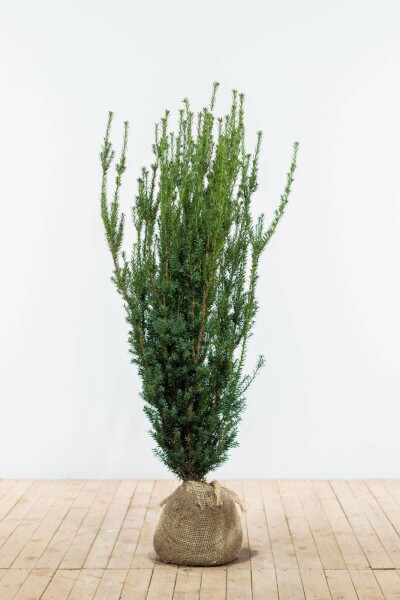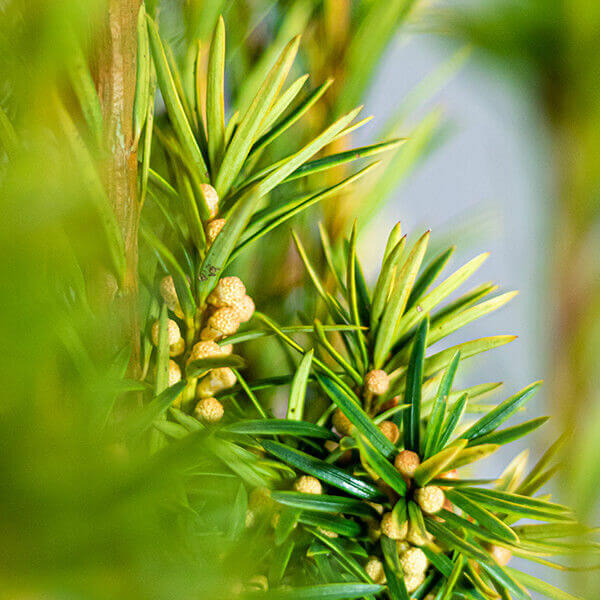Best Hedge Plants For Busy Roads
Best Hedge Plants For Busy Roads
Blog Article
Best Hedge Plants For Low Hedges
Enhance your garden's allure with rich hedge varieties such as Yew (Taxus), Thuja, Laurel, Photinia, and Bamboo, celebrated for their structural stability and ecological benefits.
Yew and Thuja supply evergreen coverage and winter season resilience, while Laurel provides quick growth and broad, aromatic leaves.
Photinia includes seasonal charm with its dynamic red foliage, and Bamboo lends a low-maintenance, peaceful atmosphere.
These hedges enhance air quality, decrease sound, and develop tranquil, personal areas.
Appropriate planting, spacing, and upkeep make sure vigorous growth and eco-friendly consistency.
Check out how these rich ranges can elevate your garden's beauty and wellness.
Secret Takeaways
Change Your Garden With Lush Hedge Varieties
- Select Yew for its dense, evergreen development and unequaled durability.
- Choose Laurel for its fast development and broad leaves, making sure fast personal privacy.
- Choose Photinia for its vibrant seasonal foliage, which turns a striking dark red.
- Utilize Bamboo for a low-maintenance, winter-hardy hedge with aesthetic appeal.
- Space plants 2-3 per meter and prune routinely for optimum development and health.
Popular Hedge Plants
When transforming a garden with lush hedge varieties, it's important to consider popular hedge plants such as Yew, Thuja, Laurel, and Photinia due to their distinct qualities and benefits.
Yew (Taxus) is highly esteemed for its longevity and dense, green growth, making it a prime option for sustaining landscapes.
Thuja is kept in mind for its evergreen foliage and robust winter season strength.
Photinia includes seasonal vibrancy with red leaves that darken gradually, producing dynamic visual appeal.
Laurel provides rapid growth and aromatic, broad leaves, perfect for fast privacy.
Additionally, Bamboo is an excellent choice for atmosphere, using a low-maintenance, winter-hardy choice that improves the garden's aesthetic with its elegant, swaying walking sticks.
These selections cater to a range of horticultural needs and preferences.
Advantages of Garden Hedges
Garden hedges provide a wide variety of benefits, making them an important addition to any landscape. These natural barriers are cost-efficient to execute and provide substantial wind security, enhancing air blood circulation and adding to noise decrease. The dense foliage of hedges like Thuja and Beech ensures personal privacy by blocking visibility, developing a tranquil and secluded environment.
Hedges likewise play an important role in microclimate guideline, offering a steady environment that promotes plant growth and lessens temperature variations. Their intricate leaf structures filter toxins, improving air quality and adding to a healthier garden community.
Moreover, hedges master sound reduction, soaking up and deflecting sound waves to lower ambient sound levels. This double functionality of supplying both visual and acoustic personal privacy enhances the general harmony and aesthetic appeal of any garden.
Planting and Upkeep Tips
For a successful hedge, precise preparation of the planting location is crucial. Guarantee the soil has correct pH and drainage to support strong root development.
Area the plants properly for the picked species. Water the hedge often throughout its preliminary growth phase, changing as required with seasonal modifications.
Implement a methodical bug control and disease prevention technique, utilizing natural or chemical treatments when needed. Regularly examine for aphids, termites, and fungal infections.
Apply mulch to maintain wetness and suppress weeds. Seasonal pruning promotes dense growth and air blood circulation, important for plant health.
Following these guidelines will assist you cultivate a lively, well-maintained hedge that enhances the charm of your garden.
Spacing and Trimming Guidelines
Spacing and Trimming Guidelines
Appropriate spacing and cutting are important for cultivating healthy, aesthetically appealing hedges. Appropriate spacing ensures each plant receives sufficient nutrients, light, and airflow.
Follow these guidelines for ideal hedge maintenance:
- Spacing: Position hedge plants 2-3 plants per meter to motivate robust development.
- Pruning Techniques: Regular pruning is necessary for maintaining wanted hedge height and shape. Cut brand-new development in summertime and cut back older wood during winter.
- Seasonal Care: Change cutting techniques and schedules according to seasonal requirements to guarantee plant health.
- Hedge Height: Regularly monitor and cut to keep the preferred hedge height and accomplish uniform aesthetics.
Sticking to these steps will ensure your hedge grows, improving both the appeal and functionality of your garden.
Choosing the Right Hedge
Picking the Right Hedge
Choosing the suitable hedge involves examining elements such as mature height, foliage density, and ecological durability. Successful hedge plant selection requires comprehending each species' growth attributes and site-specific versatility.
For example, Yew (Taxus) provides excellent durability and dense development, Additional reading while Thuja is noteworthy for its winter season durability. In addition, considering upkeep requirements is important; fast-growing species like Laurel or Privet need regular cutting, whereas low-maintenance options like Bamboo or Ivy might be preferable for those looking for very little upkeep.
Ecological factors such as soil type, light accessibility, and moisture conditions ought to likewise guide the choice process. This cautious technique ensures the picked hedges will flourish, supplying both aesthetic and practical advantages to the garden landscape.
Delivery and Planting Guidance
To guarantee your hedge plants thrive, they must be provided by specialized couriers and planted immediately upon arrival.
Follow these necessary steps for successful planting:
- Soil Preparation: Improve the soil with natural matter to improve drainage and nutrient material.
- Planting Depth: Produce a trench two times the width and equivalent to the depth of the root ball.
- Watering Techniques: Water thoroughly after planting, keeping the soil regularly wet but not saturated.
- Mulching: Use a layer of mulch to keep moisture and suppress weeds.
Client Assistance and Service
Offered the crucial role of timely support in horticultural pursuits, our client assistance group is readily available 6 days a week through telephone, e-mail, and social media to offer expert guidance and quickly attend to any issues. Their devotion to fast action times ensures customer complete satisfaction by fixing inquiries associated with plant health, ideal planting techniques, and upkeep schedules.

-----------------
Telephone
Within two days
Within 24 hours
This extensive support group, enhanced by an excellent 9.3/ 10 consumer rating, highlights our commitment to improving the gardening experience for each customer.
Regularly Asked Concerns
The Length Of Time Does It Consider Hedge Plants to Develop?
Hedge plants generally require one to three years to become fully established, with the exact duration varying by types and growing conditions.
Reliable care throughout this important duration is necessary for robust development. Constant watering, alert weed control, and proper fertilizer application are essential in promoting strong root advancement.
For instance, fast-growing types like Laurel might develop quicker, while slower-growing varieties such as Yew might take longer. Diligent maintenance speeds up the facility procedure, resulting in healthy and dense hedges.
What Are the Finest Hedge Plants for Personal Privacy?
The concern of the best hedge plants for privacy involves examining evergreen and deciduous choices.
Evergreen hedges like Thuja, Laurel, and Cypress offer year-round coverage, making sure constant privacy.
In contrast, deciduous hedges such as Beech use seasonal personal privacy, shedding leaves in chillier months.
Key upkeep suggestions for privacy hedges consist of regular trimming, fertilizing in spring, and correct spacing-- generally 2 to 3 plants per meter.
Additionally, constant watering and persistent weed removal are vital for promoting healthy, dense development.
Can Hedge Plants Draw In Wildlife to My Garden?
Yes, hedge plants can attract wildlife to your garden by supplying important benefits like shelter, food, and nesting websites, thereby boosting local biodiversity. For circumstances, yew, holly, and laurel are outstanding for attracting birds, while ivy supports a range of insects.
Nevertheless, it's important to keep in mind that there are some drawbacks, such as increased maintenance to handle pests and routine upkeep. Thoroughly picking and preserving hedge ranges can help balance these downsides and benefits, ultimately cultivating a sustainable and dynamic environment in your garden.
Are There Any Blooming Hedge Plants Available?
Yes, there are flowering hedge plants readily available that can enhance the beauty of your garden.
For example, Elaeagnus, likewise known as Olive Willow, produces fragrant white flowers in the fall, including a touch of sophistication.
Photinia, another popular choice, showcases dynamic red leaves that grow into an abundant green, creating a dynamic visual impact throughout the seasons.
To make sure these plants thrive, it's important to practice appropriate pruning strategies and seasonal maintenance, such as trimming new growth in the summer season and cutting back in the winter.
These steps will assist keep the health and visual appeal of your blooming hedges.
How Do I Avoid Pests in My Hedge Plants?
To prevent pests in hedge plants, employ natural insect control techniques and preserve appropriate hedge care. Present useful pests like ladybugs, which victimize damaging bugs, to produce a balanced community.
Routinely examine your hedges for signs of invasion and immediately eliminate any affected parts to prevent the spread. Ensure the health of your hedges by applying balanced fertilizers and supplying adequate water.
Make use of mulching to keep soil moisture and proper spacing to reduce plant tension and promote robust development. These practices jointly assist in lessening insect concerns and keeping a healthy hedge.
Conclusion
In essence, selecting the best hedge varieties such as Yew, Thuja, and Laurel can transform any garden into a tranquil sanctuary. These plants offer year-round plant, improve aesthetic appeal, and offer useful benefits like noise decrease and wind defense.
Appropriate planting methods, accurate spacing, constant watering, and seasonal cutting are important for optimal development.
Trustworthy delivery services and expert consumer support ensure a smooth experience from purchase to planting, making it easier than ever to elevate your outside area.
Garden hedges offer a wide variety of advantages, making them a valuable addition to any landscape. These natural barriers are cost-efficient to execute and supply considerable wind protection, boosting air flow and contributing to sound decrease. The dense foliage of hedges like Thuja and Beech makes sure privacy by blocking exposure, developing a peaceful and secluded environment.

Pruning Methods: Regular pruning is essential for keeping wanted hedge height and shape. Trim new development in summertime and cut back older wood during winter.
Report this page